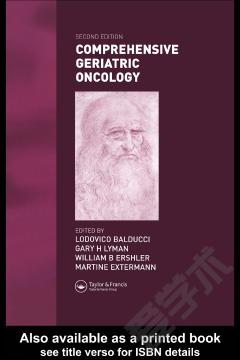Ecotoxicology —— A Comprehensive Treatment
----- 生态毒物学:综合治理
Contents Hierarchical Ecotoxicology The Hierarchical Science of Ecotoxicology An Overarching Context of Hierarchical Ecotoxicology Reductionism vs. Holism Debate Requirements in the Science of Ecotoxicology Organismal Ecotoxicology The Organismal Ecotoxicology Context Organismal Ecotoxicology Defined The Value of the Organismal Ecotoxicology Vantage Biochemistry of Toxicants DNA Modification Detoxification of Organic Compounds Metal Detoxification, Regulation, and Sequestration Stress Proteins and Proteotoxicity Oxidative Stress Enzyme Dysfunction Heme Biosynthesis Inhibition Oxidative Phosphorylation Inhibition Narcosis Cells and Tissues Cytotoxicity Genotoxicity Cancer Sequestration and Accumulation Organs and Organ Systems General Integument Organs Associated with Gas Exchange Circulatory System Digestive System Liver and Analogous Organs of Invertebrates Excretory Organs Immune System Endocrine System Nervous, Sensory, and Motor-Related Organs and Systems Physiology Ionic and Osmotic Regulation Acid-Base Regulation Respiration and General Metabolism Bioenergetics Plant-Related Processes Bioaccumulation Uptake Biotransformation Elimination Models of Bioaccumulation and Bioavailability Bioaccumulation Bioavailability Lethal Effects Quantifying Lethality Lethality Prediction Sublethal Effects General Categories of Effects Quantifying Sublethal Effects Conclusion General Some Particularly Key Concepts Concluding Remarks Population Ecotoxicology The Population Ecotoxicology Context Population Ecotoxicology Defined The Need for Population Ecotoxicology Inferences within and between Biological Levels Epidemiology: The Study of Disease in Populations Foundation Concepts and Metrics in Epidemiology Disease Association and Causation Infectious Disease and Toxicant-Exposed Populations Differences in Sensitivity within and among Populations Toxicants and Simple Population Models Toxicants Effects on Population Size and Dynamics Fundamentals of Population Dynamics Population Stability Spatial Distributions of Individuals in Populations Toxicants and Population Demographics Demography: Adding Individual Heterogeneity to Population Models Matrix Forms of Demographic Models Phenogenetics of Exposed Populations Toxicants and the Principle of Allocation (Concept of Strategy) Developmental Stability in Populations Population Genetics: Damage and Stochastic Dynamics of the Germ Line Direct Damage to the Germ Line Indirect Change to the Germ Line Genetic Diversity and Evolutionary Potential Population Genetics: Natural Selection Overview of Natural Selection Estimating Differential Fitness and Natural Selection Ecotoxicology's Tradition of Tolerance Conclusion Overview Some Particularly Key Concepts Concluding Remarks Community Ecotoxicology Introduction to Community Ecotoxicology Definitions-Community Ecology and Ecotoxicology Historical Perspective of Community Ecology and Ecotoxicology Are Communities More Than the Sum of Individual Populations? Communities within the Hierarchy of Biological Organization Contemporary Topics in Community Ecotoxicology Biotic and Abiotic Factors that Regulate Communities Characterizing Community Structure and Organization Changes in Species Diversity and Composition along Environmental Gradients The Role of Keystone Species in Community Regulation The Role of Species Interactions in Community Ecology and Ecotoxicology Environmental Factors and Species Interactions Biomonitoring and the Responses of Communities to Contaminants Biomonitoring and Biological Integrity Conventional Approaches Biomonitoring and Community-Level Assessments Development and Application of Rapid Bioassessment Protocols Regional Reference Conditions Integrated Assessments of Biological Integrity Limitations of Biomonitoring Experimental Approaches in Community Ecology and Ecotoxicology Experimental Approaches in Basic Community Ecology Experimental Approaches in Community Ecotoxicology Microcosms and Mesocosms Whole Ecosystem Manipulations What is the Appropriate Experimental Approach for Community Ecotoxicology? Application of Multimetric and Multivariate Approaches in Community Ecotoxicology Multimetric Multivariate Approaches Disturbance Ecology and the Responses of Communities to Contaminants The Importance of Disturbance in Structuring Communities Community Stability and Species Diversity Relationship between Natural and Anthropogenic Disturbance Contemporary Hypotheses to Explain Community Responses to Anthropogenic Disturbance Biotic and Abiotic Factors that Influence Community Recovery Influence of Environmental Variability on Resistance and Resilience Quantifying the Effects of Compound Perturbations Community Responses to Global and Atmospheric Stressors CO2 and Climate Change Stratospheric Ozone Depletion Acid Deposition Interactions among Global Atmospheric Stressors Effects of Contaminants on Trophic Structure and FoodWebs Basic Principles of FoodWeb Ecology Effects of Contaminants on Food Chains and FoodWeb Structure Conclusions General Some Particularly Key Concepts Ecosystem Ecotoxicology Introduction to Ecosystem Ecology and Ecotoxicology Background and Definitions Ecosystem Ecology and Ecotoxicology: A Historical Context Challenges to the Study of Whole Systems The Role of Ecosystem Theory Recent Developments in Ecosystem Science Ecosytem Ecotoxicology Links from Community to Ecosystem Ecotoxicology Overview of Ecosystem Processes Bioenergetics and Energy Flow through Ecosytems Nutrient Cycling and Materials Flow through Ecosystems Decomposition and Organic Matter Processing Descriptive Approaches for Assessing Ecosystem Responses to Contaminants Descriptive Approaches in Aquatic Ecosystems Terrestrial Ecosystems The Use of Microcosms, Mesocosms, and Field Experiments to Assess Ecosystem Responses to Contaminants and Other Stressors Microcosm and Mesocosm Experiments Whole Ecosystem Experiments Patterns and Processes: The Relationship between Species Diversity and Ecosystem Function Species Diversity and Ecosystem Function The Relationship between Ecosystem Function and Ecosystem Services Future Research Directions and Implications of the Diversity-Ecosystem Function Relationship for Ecotoxicology Ecological Thresholds and the Diversity-Ecosystem Function Relationship Fate and Transport of Contaminants in Ecosystems Bioconcentration, Bioaccumulation, Biomagnification, and Food Chain Transfer Modeling Contaminant Movement in FoodWebs Ecological Influences on Food Chain Transport of Contaminants Effects of Global Atmospheric Stressors on Ecosystem Processes Nitrogen Deposition and Acidification Ultraviolet Radiation Increased CO2 and Global Climate Change Interactions among Global Atmospheric Stressors Ecotoxicology: A Comprehensive Treatment-Conclusion Conclusion Overarching Issues Summary: Sapere Aude Index
{{comment.content}}








 京公网安备 11010802027623号
京公网安备 11010802027623号